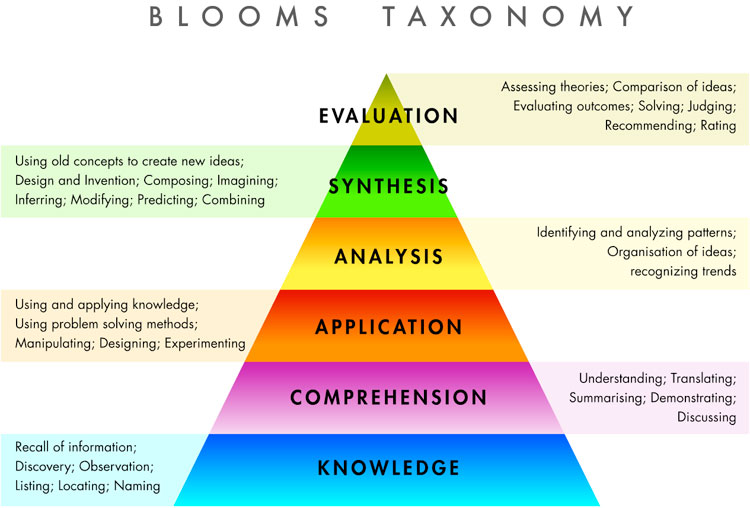Bloom's Taxonomy: Scaffolding
Higher Order Thinking Skills
Teaching Context: ESL in a Elementary/ High School setting
Proficiency level: Level 3 through level 5 (WIDA)
Link: http://njtesol-njbe.org/handouts11/LessonWriter.pdf

Benjamin Bloom created this taxonomy (see above picture) for categorizing levels of abstraction of questions that commonly occur in educational settings. The taxonomy provided a useful structure in which to categorize discussion questions. By consciously including all levels of skills, you will increase both learning skills in general and specific knowledge acquired.
Bloom's taxonomy provides teachers with critical thinking questions to ask students and can assist with high order thinking skills. The structure of the taxonomy is divided in 5 different parts, and each part has different set of questions. The students are asked to analyze, discover, discuss, demonstrate, to recall information from the text. The questions can be used for discussions or as part of the assessment.
Bloom's taxonomy was not specifically designed for ESL students but ESL students should be asked critical questions from all level of Bloom's taxonomy. The wording and language can be difficult for lower level students but the teacher can always use visuals and change some of the wording in the questions.
For example, to recall information from a reading material using Bloom's taxonomy, the teacher may ask:
WIDA Level 2: "When
did _____ happen?"
WIDA Level 3: What
did ______ do when ______?"
WIDA Level 4: "Describe
the setting. or "In your own words, describe..."
The higher order thinking questions can benefit all students in the classroom. Teachers need to help students think for themselves and not feed them all the information. Students should be able to discover and analyze the information themselves. ELL students should be asked critical thinking questions depending on their level and age group. The questions should be appropriate to their language level and content. The Bloom's Taxonomy and higher order thinking questions can assist teachers with the WIDA standards. By asking the critical questions, the teacher is giving the questions but the students are the investigators and have to think for themselves. When asking these questions to ELL students, students are listening and speaking in all content. Many times, the students will need to go back and re- read the material in order to respond to the questions. These questions can be used in all academic subjects. Bloom's taxonomy helps with all levels and standards of WIDA.
Reference
Haynes, Judy. (2009) Blooms taxonomy
and English Language Learners. Retrieved from www.everythingESL.net

